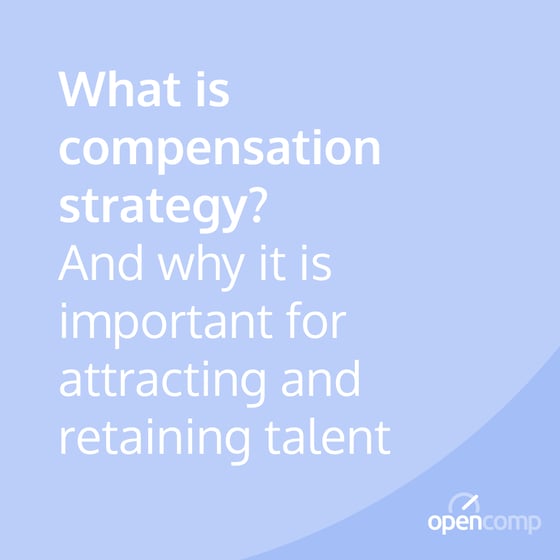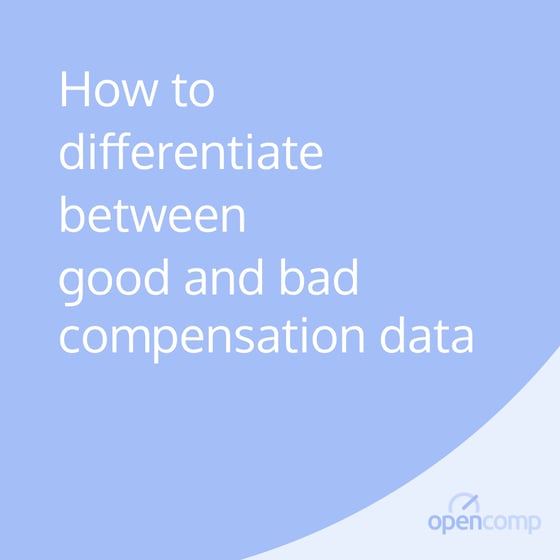Build a compensation philosophy that supports your fast-growing organization by addressing these key areas.
When you’re new to compensation, a compensation philosophy can seem abstract and theoretical. Maybe even optional. But in reality, a this philosophy is the foundation of a strong compensation program.
A compensation philosophy is a document that explains how your company plans to pay and reward its employees based on its financials, values, and goals. That’s a lot to cover, but with the right strategy, you can build a philosophy that supports the needs of your business today and moves you toward your vision for its future.
In this article, we’ll review the four pillars, or key areas, you should address to create a compensation philosophy that’s right for your business:
- Market position
- Pay mix
- Segmentation
- Geo strategy
(Brainstorming for these pillars comes after market analysis and benchmarking, the first steps in compensation program design. If you need to back up, download our e-book, Guide to Compensation Benchmarking, or watch our on-demand webinar, What’s the Big Deal about Compensation Benchmarking?)
Compensation Philosophy Pillar 1: Market Position
Market position is about understanding how you’re paying employees versus what your competition is paying theirs. Your goal is to find a balance between attracting top talent and your company’s finances.
To begin, review your organization’s goals. What are you trying to accomplish? Your philosophy should drive you toward those goals by helping you attract and retain the right people to make it happen.
Next, evaluate your market position based on your market analysis and benchmarking. Ask yourself:
- What does this market analysis reveal about our current spend and placement in the market?
- Do we want to be in this position?
- Do we want to lag, meet, or lead the market? For instance, do you want to pay at the top of a salary range, or pay lower in cash and higher in equity?
Use your answers to decide how you’ll target the market and at what percentiles you’ll pay for different roles.
Once you’ve developed your market position, compare it against your company’s financials to make sure your company can support it.
Compensation Philosophy Pillar 2: Pay Mix
Pay mix defines how you will pay in terms of cash, equity, and variable incentives like bonuses and commissions.
Your pay mix should provide motivation for employees to shine in areas where they’ll have the most impact. Because of this, pay mix can vary by role. For example, executives often receive the majority of their compensation in equity because they have a direct impact on the long-term success of a company. Individual contributors might be paid with a larger base and bonus because these roles focus on short-term goals.
Here are some things to consider as you develop a strategy for dividing your dollars:
- Are you focusing more on equity or cash?
- Will you be moderate or aggressive on both?
- Are there places in your organization where the pay mix is based on role or job level?
Compensation Philosophy Pillar 3: Segmentation
Segmentation is about understanding your employee population and talent base to create your value proposition and the best incentives for joining your company.
First, decide whether you’ll have a single pay strategy for the entire company or if your pay strategy will vary by group. If you’re segmenting by group, make sure you have a very clear rationale for it. This helps create transparency and trust between your company and its employees and job candidates.
Some things to consider:
- What stage of growth is your company in?
- Who are the employees within each department?
- Who are the individuals you’re trying to attract and what are their needs?
- What companies are you competing with for talent?
Once you’ve considered those general questions, look at segmentation from the following areas:
Critical roles: Sometimes referred to as “premium roles,” these positions are considered essential to achieving your company’s goals. For example, you may pay engineers more than a marketing manager at the same level if the engineer’s role has a bigger impact on goals.
This designation may be consistent in each stage of your company’s growth or may change over time.
Generational demographics: Don’t overlook the fact that your employees come from different experiences and backgrounds and are in different stages of their lives. As a result, they have different needs and priorities when it comes to compensation.
An employee who is close to retirement may value stability, health care, and retirement benefits, while a recent college graduate may value education and development opportunities.
Succession planning: Consider how you move employees through job levels to ensure there are no gaps if key or critical talent leave your organization. Have criteria and processes in place so your company can act quickly to fill these essential roles.
Compensation Philosophy Pillar 4: Geo Strategy
Geo strategy addresses the differences in pay related to employees’ work locations. It’s been an important topic since the COVID-19 pandemic forced employees into remote and hybrid work arrangements.
Geographic differences in pay are based on cost of labor, which is often confused with the cost of living. Here’s how they’re different:
- Cost of living is the cost of maintaining a certain lifestyle and is based on things like rent, gas, and groceries.
- Cost of labor is the cost of attaining work-related skills, knowledge, and experience. Compensation benchmarking data is based on the cost of labor.
Overall, as you consider geographic differences in pay, think about what’s affordable, fair, and right for your business. Here are some other things to consider:
- Do you differentiate pay based on work location?
- Are you paying higher or lower based on a specific labor market?
- Are you looking at the national market with no regional differences in pay?
- Do you pay premium rates in non-premium work locations to lead in inexpensive labor markets?
- How do you pay new hires, internal transfers, or employees who relocate?
- Are there any exceptions to these geography-based policies? It’s important to note that if you do allow exceptions to consider potential negative results. For instance, will there be pay compression issues if someone moves to a new location and moves to the top of their range, beating out their peers? Will there be impacts to pay equity?
Don’t rush the process
As you work your way through these pillars, remember that a compensation philosophy isn’t built in a day. It requires time, intention, and support beyond your people team. Your entire executive team should also contribute to the development of your philosophy.
Once your compensation philosophy is complete, everyone in your organization – from individual contributors to leadership – should be able to reference it to explain and understand every pay-related decision. The result: compensation clarity, transparency, and better decision-making for your organization and your employees.



